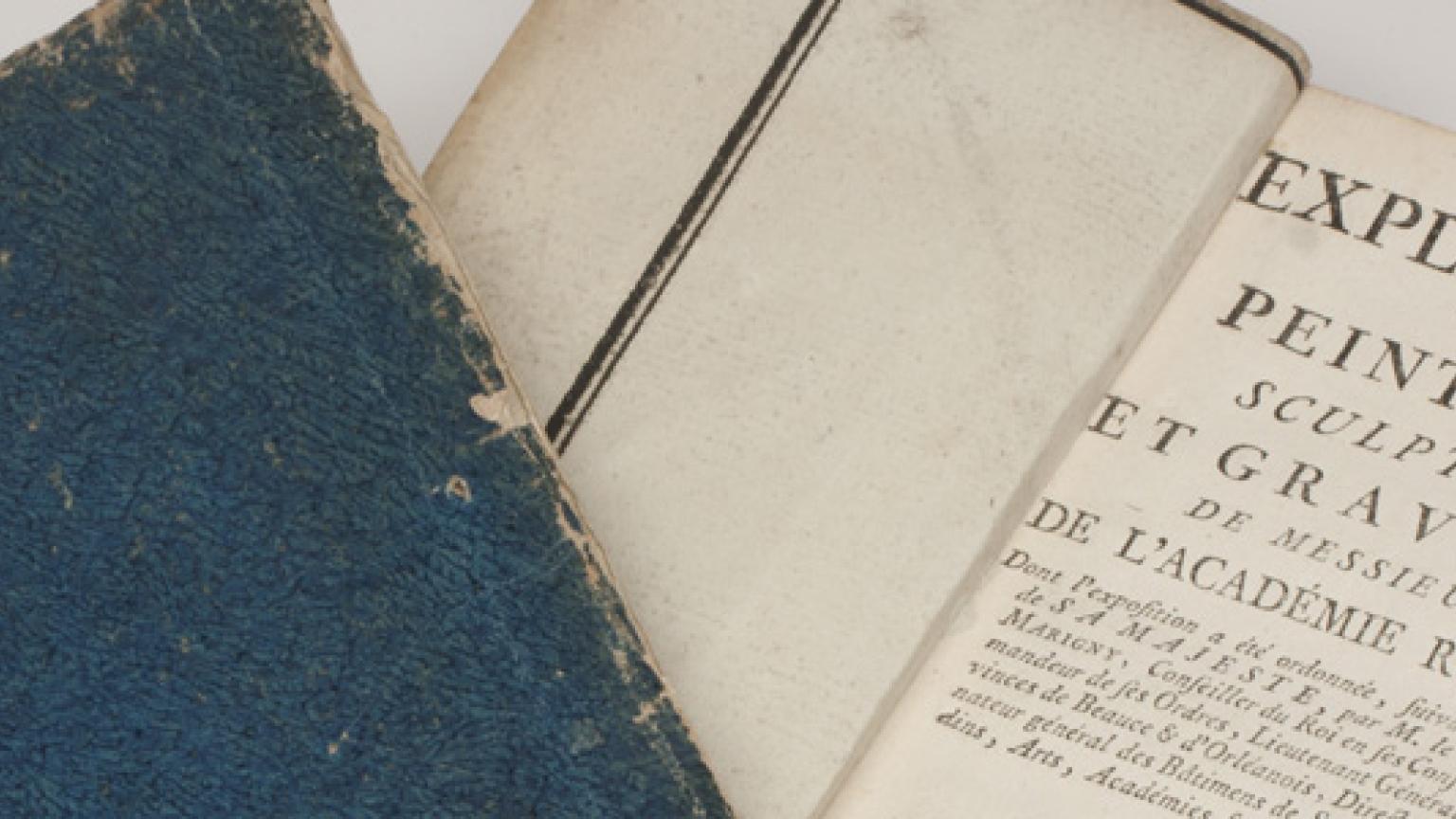Past Exhibition
In the Library: Growth and Development of the Salon Livret

Details

Marking the publication of Documenting the Salon: Paris Salon Catalogs, 1673–1945, we present here over sixty examples of literature related to the Paris Salon drawn from nearly 250 years of exhibitions, controversies, and political upheavals. Our installation not only includes publications that trace the rise and fall of the Paris Salon—an institution in the French art world—but also links them to works in the collection of the National Gallery of Art.
The Académie royale de peinture et de sculpture was founded in 1648, and a plan for regular exhibitions of its members’ work was established in the academy’s statutes of 1663. The first exhibition was in 1664 and 1665, with others following (sporadically) in 1673, 1699, 1704, and 1725. The Salon livret (“little book” or catalog) was first published for the Salon of 1673. The livret began as a pamphlet issued in decorative paper wrappers, a simple guide providing basic information, such as artists and titles, about the works on display. Early titles varied from one show to the next, as did the selection and organization of the information. The Salon became an annual event in 1737 and the livret title became standardized, at least until the Revolution. However, changes in the Salon’s administration and exhibitions continued throughout its history and were usually reflected in the livrets.
The methods of documenting the Salon changed over time. In the eighteenth century, the livrets grew larger as the number of entries increased and supplementary material was added. From its beginning as a simple printed checklist, the livret later ran to hundreds of pages, with information about the juries, the artists, and the rules of the organization itself eventually added. In the nineteenth century, illustration of works from the Salon was introduced and changed dramatically. New printing technologies, from lithography to photography, allowed for increasing numbers of reproductions and increasingly faithful representations of the original works. At first printed in separate publications, illustrations eventually made their way into the official livrets as well.
Developments beyond the academy can also be seen in the growing amount of literature surrounding Salon exhibitions. Art criticism, a new type of writing in the eighteenth century, evolved alongside the official exhibition livrets. Later, the political upheavals of and following the French Revolution affected the administration of the Salon, and these changes can be read in the livret as well. In addition, controversies surrounding the exhibitions, from the dissatisfaction of member artists to political machinations within the organization, persisted throughout the nineteenth century. By the early twentieth century, there were not only masses of commentary about and documentation on the official Salon, but also several rival exhibitions, each with its own catalog—a trend that would continue as the influence and importance of the Salon declined.
Brochure: Growth and Development of the Salon Livret, by Yuri Long. Washington, D.C.: National Gallery of Art, 2016.




